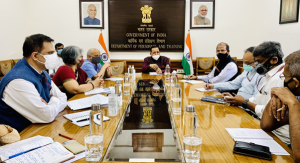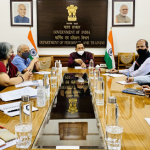National level exams are a big deal in India. They’re an opportunity to showcase your skills, and they can also help you get into the college of your dreams. But if you’re not sure what these exams are or how to prepare for them, it can be hard to know where to start.
That’s why we put together this list of the top 9 national level exams in India: so you can understand what they are, how they work, and whether or not they’re right for you!
1. UPSC Civil Service Entrance Examinations
The UPSC Civil Service Entrance Examinations (IAS) in India are conducted by the Union Public Service Commission (UPSC). They are held for recruitment to the Indian Administrative Service (IAS), Indian Foreign Service (IFS), and Indian Police Service (IPS) among other central government services.
The IAS is considered one of the most prestigious and competitive exams in India with a success rate of less than 1%. The exam consists of three stages – Preliminary, Main, and Interview. The Preliminary stage is a multiple-choice exam consisting of two papers – General Studies Paper I and General Studies Paper II. Candidates who clear the Preliminary stage are eligible to appear for the Main stage, which is an essay-based examination. Finally, candidates who clear the Main stage are called for an interview with the UPSC panel.
2. IIT-JEE Entrance Examinations
The Indian Institutes of Technology Joint Entrance Examination (IIT-JEE) is an annual engineering entrance examination in India. It is conducted for admission to various undergraduate courses in the field of engineering and technology at the 22 Indian Institutes of Technology (IITs).
The IIT-JEE is widely regarded as one of the most difficult examinations in the world with a success rate of less than 1%.
Aspirants must pass two exams: JEE Main, JEE Advanced to get admission in IITs.
Eligibility criteria for appearing in these examinations are that the candidate must have passed 10+2 level or equivalent exam with Physics and Mathematics as compulsory subjects along with one optional subject from Chemistry, Biology, Biotechnology orTechnical Vocational Subject. Candidates must have secured at least 75% marks (65% for SC/ST/PwD category) in 10+2 qualifying examination or be within 25 years of age.
3. GATE(Graduate Aptitude Test in Engineering)
The GATE exam is an examination that is held for students who wish to pursue masters or doctoral programs in engineering, technology, architecture or science. In India, the Public Sector Undertakings (PSUs) accept the GATE score for recruiting candidates for various engineering posts. There is no age limit for taking the GATE exam and aspirants must fulfill at least one of the below conditions to be eligible to take the test:
- Bachelor’s degree in engineering/science from a recognized university
- Master’s degree in math, science, stats or computer applications from a recognized university
- Studying in final year of Bachelor or Masters’ degree.
4. CAT (Common Admission Test) exam
The CAT (Common Admission Test) is a national-level entrance examination conducted by the Indian Institutes of Management (IIMs) for admission to 20 IIMs and 100+ B-schools in India. An older IIM administers the test each year.
Over 2 lakh hopefuls take the CAT test yearly, but only a few thousand get into elite B-schools. The competition is tough as there are more than 10 times as many applicants as there are seats available.
The CAT exam has three sections – Quantitative Ability (QA), Verbal Ability & Reading Comprehension (VARC) and Data Interpretation & Logical Reasoning (DILR).
Each section has 34 questions and candidates have 60 minutes to finish each section. Candidates must attempt at least 28 questions across all sections with no single section having less than 8 questions attempted or more than 18 questions attempted.
5. NDA (National Defence Academy)
An NDA exam is held by the Union Public Service Commission (UPSC) for admission to the National Defence Academy (NDA) which is the joint service academy of the Indian Armed Forces.
The National Defence Academy comprises of Army, Navy and Air Force cadets. After successfully completing their training at the academy, they are commissioned as officers in either one of the three services.
There are a total of 390-450 seats which are allotted on merit basis, through an entrance examination consisting of two papers – Mathematics and General Ability Test (GAT). Both these papers are scheduled for two-and-a-half hours duration each and there is a total of 900 marks.
6. NEET (National Eligibility cum Entrance Test)
The National Eligibility cum Entrance Test (NEET) is an entrance examination in India, for students who wish to study any graduate medical course (MBBS), dental course (BDS) or postgraduate course (MD / MS) in government or private medical colleges in India.
NEET is conducted by the Central Board of Secondary Education (CBSE). NEET-UG replaced the All India Pre-Medical Test (AIPMT) and all individual MBBS exams held by states or colleges themselves in 2013. Aspirants who have completed Class 12th or equivalent qualifying examination with Physics, Chemistry, Biology/Biotechnology as main subjects are eligible to appear for NEET 2020 exam.
The minimum age limit for candidates to be eligible to sit for the exam is 17 years as on December 31 of the year of admission. There is no maximum age limit for appearing in NEET UG exam.
7. CLAT (Common Law Admission Test)
CLAT (Common Law Admission Test) is an entrance examination for students wishing to pursue a career in law. The exam is held annually by the National Law Schools of India and is a gateway to some of the most prestigious law colleges in the country.
The CLAT exam tests students on their knowledge of five main subjects – English, General Knowledge, Legal Aptitude, Logical Reasoning and Mathematics. The test is designed to measure a student’s ability to think critically and analytically, as well as their ability to communicate effectively.
The CLAT exam is conducted over a period of two hours and thirty minutes and consists of 200 multiple-choice questions. There is no negative marking for wrong answers, so candidates are advised to attempt all questions.
8. Chartered Accountant Exam
Chartered Accountant Exam in India is conducted by the Institute of Chartered Accountants of India (ICAI). The ICAI is responsible for setting the standards for education and examination for those aspiring to become chartered accountants in India.
The entrance exam for the CA course is called the Common Proficiency Test (CPT). It is a computer-based test held twice a year, usually in June and December. To be eligible to take the CPT, candidates must have completed their 10+2 or equivalent exam from a recognized Board or University.
The CPT consists of two sections –
- Paper 1: Fundamentals of Accounting
- Paper 2: Mercantile Laws. Candidates will need to score a minimum of 50% marks in each section to pass.
After clearing the CPT, candidates will need to undergo practical training for three years at a registered firm of chartered accountants or under an individual chartered accountant who has been practicing for at least three years.
After successful completion of practical training, candidates will then need to appear for the Intermediate (Integrated Professional Competence) Examination which has two groups – Group I and Group II. Both groups must be cleared within six attempts overall, with a maximum of four attempts allowed per group.
9. National Institute of Design Entrance Examination
Design in India has been one of the most important facets of the country’s heritage. The National Institute of Design (NID) is a premier design institute in India that offers graduate and postgraduate programmes in design. NID entrance examination is the gateway to these programmes and is conducted every year to select eligible candidates for admission.
The NID entrance examination is conducted over a period of two days and consists of three sections – written test, situation test and group discussion/ interview.
The written test assesses candidates on their critical thinking, analytical and vehicles designing ability. The situation test is basically a presentation round where aspirants have to present their ideas on a given topic. And finally, the group discussion/ interview tests interpersonal skills along with knowledge of the Design field.










